Lisbon: Sing a song to Portugal’s oft-embattled capital
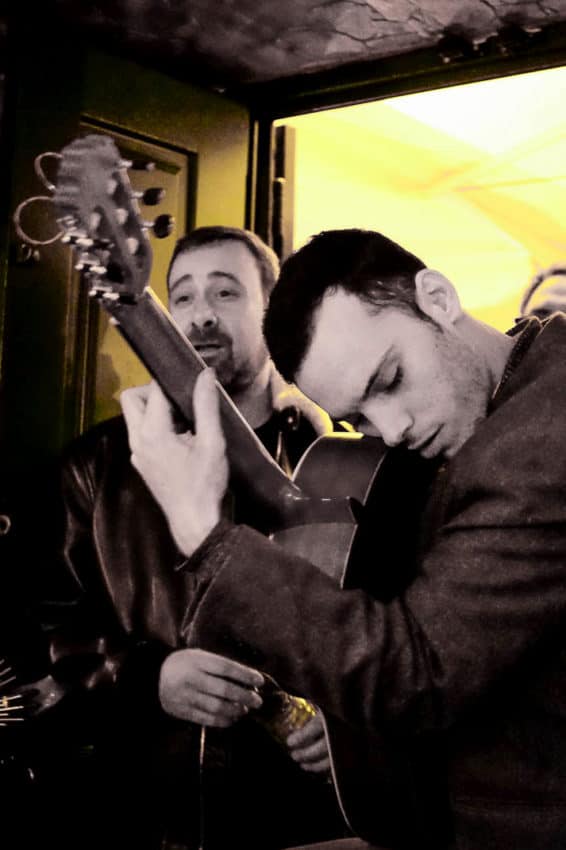
Arms and the Heroes, who from Lisbon’s shore,
Through Seas where sail was never spread before,
Beyond where Ceylon lifts her spicy breast,
And waves her woods above the watery waste,
With prowess more than human forced their way
To the fair kingdoms of the rising day:
What wars they waged, what seas, what dangers passed,
What glorious empire crowned their toils at last!
— Luis de Camoes, “Os Lusiadas,” 1572
LISBON, Portugal — I’m standing below Camoes’ statue in, appropriately, Praca Luis de Camoes, a pretty plaza in the middle of downtown Lisbon. He stands regally, a knee slightly bent, holding a sword in his right hand. He looks more like a sailor battling Amazonian Indians than the greatest writer in the Portuguese language. He’s considered Portugal’s Shakespeare. Camoes wrote mostly of love and longing with poetry that has touched hearts and minds from Portugal to Macau.
In “Os Luisiadas” (The Lusiads, the mythical name for the Portuguese), instead, he wrote of Portugal’s conquests. In the 16th century, Portugal was the scourge of the open seas. It was Europe’s wealthiest monarchy. Vasco da Gama (India), Pedro Cabral (Brazil), Ferdinand Magellan (around the world) were just some of the explorers who made huge discoveries or did world firsts.
Camoes also made his mark by drinking himself penniless, hitting on the king’s queen and mistresses, killing a man and losing an eye in the army. They’ve learned to take the bad with the good in Lisbon. Its history is rife with international triumphs, terrible leaders, natural catastrophes and civic comebacks.
Today it’s on one of its upswings. Its economy is growing. Its unemployment is dropping. Officials from around the world come to Lisbon to study its revolutionary softer approach to drug abuse. No longer is Lisbon that European capital too far out of the way to visit. It was the destination for 10 million tourists in 2016 with some of the cheapest prices in Europe and its famed port wine that packs much more wallop than that wimpy sangria of their hated neighbor, Spain.
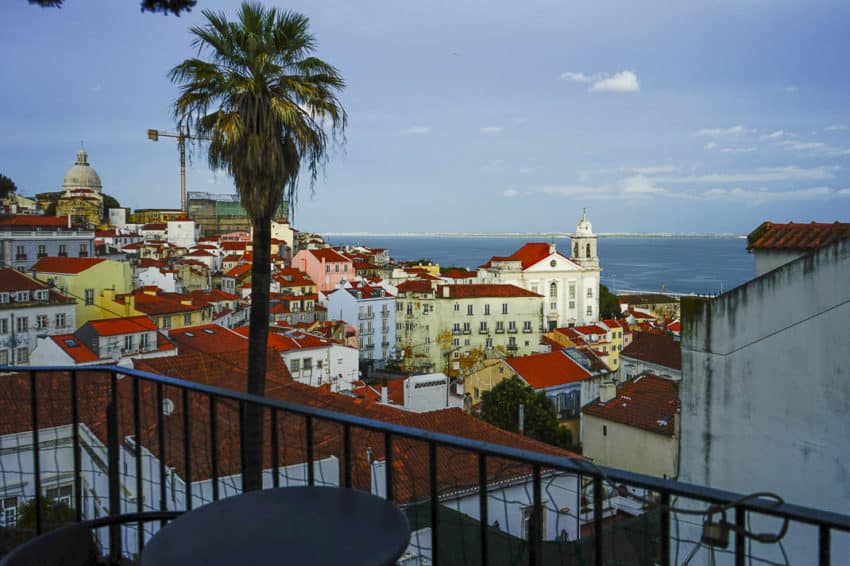
While an earthquake in 1755 leveled most of Lisbon back to the Iron Age, one area brings back memories of when Portugal was Muslim and Moors roamed the streets and governed the town. Lisbon’s Alfama neighborhood stretches up a steep hill leading to the 11th century Castelo de Sao Jorge. Between our bed and breakfast across the street from the mighty Rio Tejo and the castle’s ramparts lies a labyrinth of narrow, cobblestone alleys that twist and turn like a blackberry bush. The dark, narrow staircase near our B&B ascends steeply onto a walkway where restaurant staffers are setting up red chairs for another night of wine, women and song. A few feet up the walk on a tiny square, three black men sit on plastic chairs chatting and smiling. They’re in a better mood than the man on the next level up, sleeping in a pup tent with a sign in front reading, “Help any way you can.” A fisherman’s hat sits nearby with a few stray coins.
It’s not nightfall yet fado, Portugal’s version of the blues, is already drifting in the air. I look around and can’t tell where it’s coming from. The singers who dress to the nines and entertain diners probably haven’t woken yet. I see no sound machines. I see the music is coming out of Alfama’s windows. I’m hearing fado in stereo.
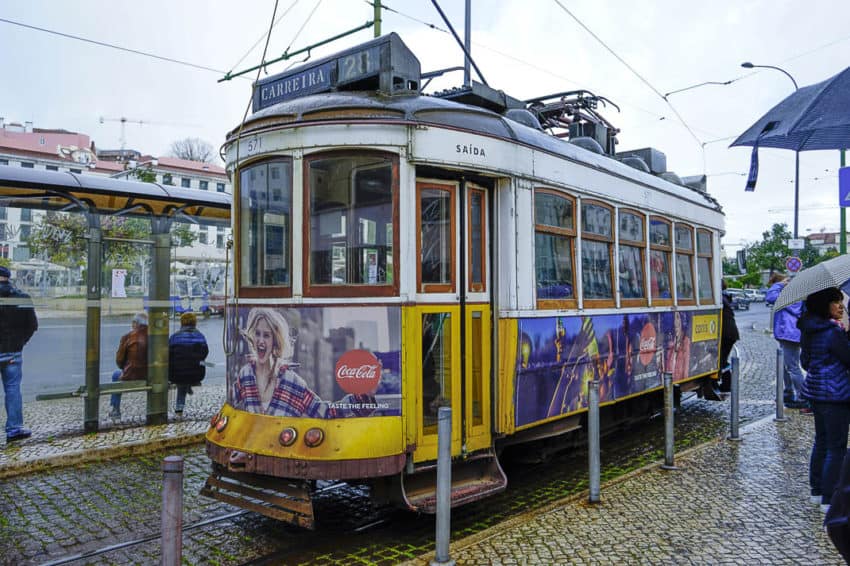
Too bad I hate fado. Well, I hate most music and fado, screeching songs of bittersweet love born on these very working-class streets, joined my list of genres with which I can’t be in the same room. Lisbon is called Europe’s Havana. It’s not just because you can’t walk anywhere, particularly Alfama, without hearing music coming from someone’s window, a plaza or an idling car. It’s also a city that is recovering from a brutal regime, has inspired important writers, however tortured, and where the people can forget their problems in music and most importantly, for me, great alcohol.
My lovely and talented girlfriend, photographer Marina Pascucci, recently took me here for my birthday over a long weekend. She’d been to Lisbon before, stayed in the Alfama and regaled me with tales of dimly lit alleys, romantic restaurants and lovely walks. I’d also been to Portugal. In 2010 I went to Porto where I fell dangerously in love with its legendary port wine and learned the hard way that it’s about 20 percent alcohol.
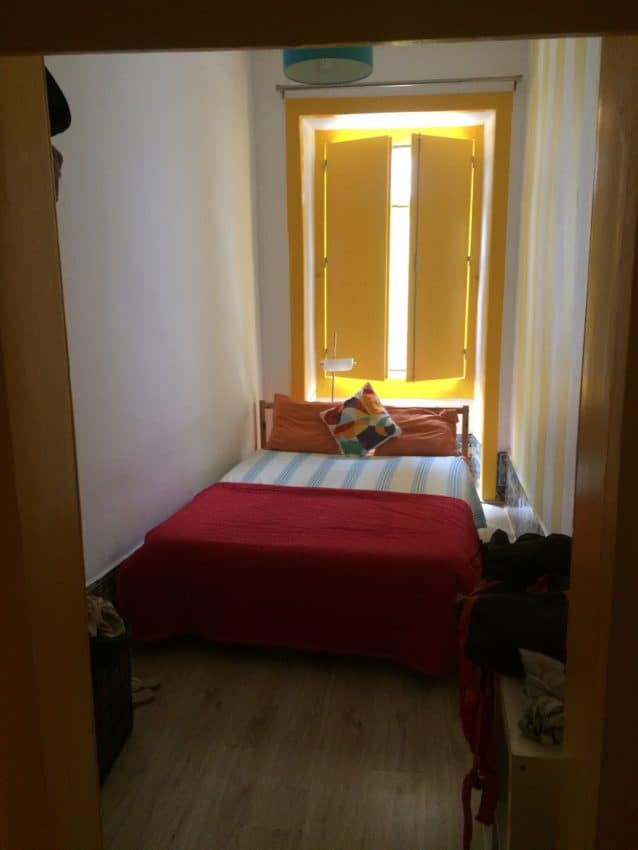
I spend much of the night of our arrival trying to keep Marina from throwing herself in front of one of Lisbon’s historical street cars from sheer embarrassment. The hotel she reserved, the B. Mar Hostel & Suites, gave us a room only a refugee could love. The double bed was shoehorned into the room so tight we had to nearly enter it from the foot of the bed. The closet consisted of four hooks on the wall.
I don’t care. I read enough about Alfama to know people from all over the world descend here for a taste of Old Portugal. And we are in the middle of it. Alfama hotels are outrageously expensive for Lisbon, ranging from 150-250 euros. I forgave her.
Marina and I spent New Year’s Eve in Fez, Morocco, home of the world’s largest car-free zone, known as a medina. Alfama reminds me of Fez. The few cars can barely negotiate the narrow alleys climbing the hill. Alfama is also Lisbon’s most social neighborhood. We stroll past neighbors sitting on stoops, talking below flapping laundry. Merchants stand outside their tiny shops, not barking at customers but engaging in conversation with passersby.

What Lisbon has thankfully added since the Moors’ departure in 1147 after 400 years is some of Europe’s best booze. I became familiar with port wine in Porto, Portugal’s No. 2 city 200 miles north of Lisbon, and very familiar with a Portuguese hangover. Who knew wine could hit like brandy? They’ve been growing grapes here since the Romans arrived 2,000 years ago. Thank the British, who never met an alcohol they couldn’t swill, for adding the punch. During its war with France in the 17th century, England faced a – gasp! – wine shortage. It signed a treaty with Portugal to produce wine and, according to legend, added brandy and grape juice to help preserve shipment back to England.
What I found is my favorite sweet wine, perfect for an after-dinner drink or, in our case, a daily nutrient in Lisbon. As the day’s dreary drizzle drifts away and darkness approaches, we find a little hole in the wall with two tables outside where a young, hip couple and old man have glasses of beaming ruby red wine. Ginjinha da Se is a local hangout where a heavily tattooed waitress serves us a variety of Portuguese cheeses and a glass of Tawny Red, considered port’s table wine. Next to us a grizzled local in dirty clothes digs into a cheese and meat plate. A string of lit Christmas balls hangs on the wall next to rough pencil drawings of Lisbon scenes.

Marina is a typical Roman teetotaler and is used to abiding my pursuit of exotic alcohol. In Lisbon I find the perfect target in ginjinha. It’s Portugal’s traditional cherry liqueur. Cherry being my favorite fruit, it’s a perfect combination. Down the road and down a slight incline, we discover another little spot called Casanovas. Behind a tiny bar with only two seats stands an old man poured tall narrow bottles of ginjinha in small, bell-shaped shot glasses. We sit in the back on overstuffed round pillows next to two local business women and walls lined with photos of old Portuguese entertainers. Ginjinha is so sweet, after two sips you have an insurmountable quest to find vanilla ice cream to pour it on.
For a true grasp of what Lisbon is about, however, you must push yourself away from the bar and learn its history. This is a city that’s had its heart broken more than a teenage boy. Invasions. Lousy kings. Natural disasters. Coups. It’s amazing the place is still standing. The Portuguese think so, too. They are famous for being among the biggest complainers in Europe. No one underestimates their country more than the Portuguese who are known for complaining about everything from prices (it’s among the cheapest countries in Europe) to its bureaucracy (come to Rome, baby) and out-of-control tourism (your gross domestic product hit 17-year high last year thanks to a 13-percent jump in tourism).
Back under Camoes’ statue, I dive into Lisbon’s history. I’m not a big guided tour guy but many European capitals do free walking tours. A tour of Reykjavik, Iceland, last May was terrific so I brave pouring rain to walk the cobbled streets of Lisbon with Eduardo, a wise-cracking, self-deprecating young Portuguese.
Some things I didn’t know about Lisbon:
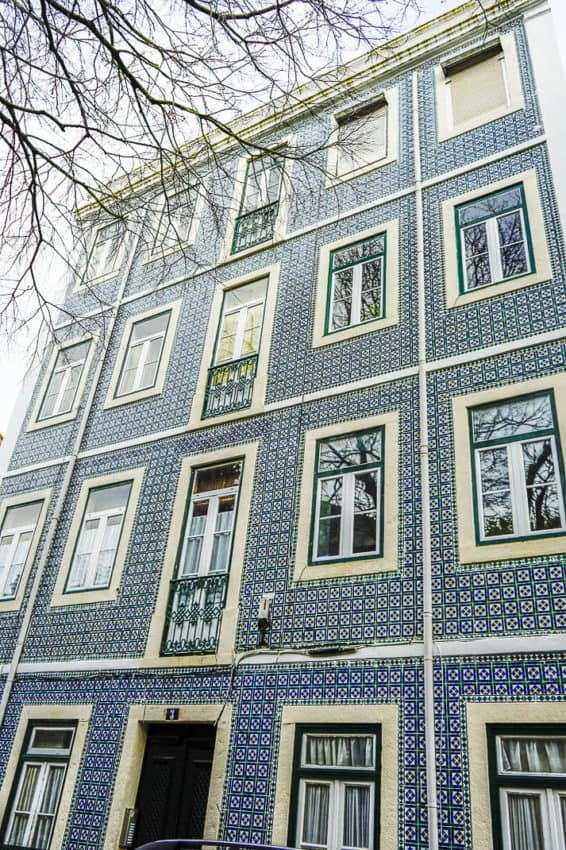
* It’s the second-oldest capital in Europe behind Athens, founded in 1200 B.C. It beat Rome by nearly 400 years.
* The Phoenicians found the Tejo calm and made it easy to dock. They docked and stayed for 1,000 years. Unlike the Romans who left monuments like business cards around the world, the Phoenicians left no evidence they were ever here.
* It has been invaded more than an army refrigerator. After the Phoenicians left came the Romans for 500 years, then the Barbarians, the Visigoths, the Moors and the Spanish. “The Visigoths were lazy,” Eduardo says. “I think we inherited that from them.”
* Coca-Cola was illegal here until 1974. It was considered too capitalistic, which tells you something about the dictatorship of Antonio de Oliveira Salazar.
Lisbon has been the working place for some of the worst leaders in Europe, a string of corrupt swindlers, liars and frauds, not that I have reason to talk, being from the U.S. But look at some of the guys who led Portugal through history:

King Dom Jose I. He was the king during the earthquake of 1755. It leveled almost the entire city — except for Alfama. Churches collapsed and those who weren’t crushed burned alive from the falling candles. Then came tsunamis that killed even more. A reported 90,000 of Lisbon’s population of 270,000 died. After the earthquake which destroyed his palace, King Dom Jose became claustrophobic and never again went inside a building. He lived outside of Lisbon in a giant tent. He came into the city only twice.
Under his orders, he had a statue built of himself. It remains today anchoring the massive riverside Praca do Comercio, a proud man astride a steed. But if you look close, you can see how the townspeople who hated him got the last laugh. The horse is small with a bow tie on its tail. It’s not a war horse. It’s a show pony. He didn’t know. The horse is trampling snakes, supposedly representing his enemies. No. The snakes were added to scare away pigeons. To this day, no pigeons land on the statue. It’s also facing the river. He wanted it to represent himself as a sentinel. Nope. In actuality he’s facing the river because he never looked at the city. His back is facing town.
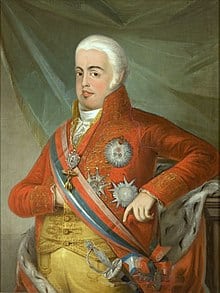
King Joao VI. In the 1670s gold mines were discovered in Brazil and soon Brazil became Portugal’s sugar daddy. They shipped 90 tons of gold a year to Portugal as well as jade and diamonds. Portugal became the richest country in Europe. In 1807, Napoleon Bonaparte told Portugal to stop trading with England or he’d attack. King Joao took the gold and fled to Rio de Janeiro and made Rio the capital of the Portuguese Empire. Lisbon turned into nothing more than a dock. The French then took the dock, the English took it from the French and the Portuguese fought off the English.
The Portuguese told King Joao to leave Brazil and come home and he said, “Thanks, but have you seen the weather down here?” The king finally returned but told his son, Pedro, to keep order and gold in Brazil. In 1822 Pedro declared himself emperor of Brazil and made it the most important province of the empire. He recognized Brazil’s independence and that collapsed the Portuguese empire.
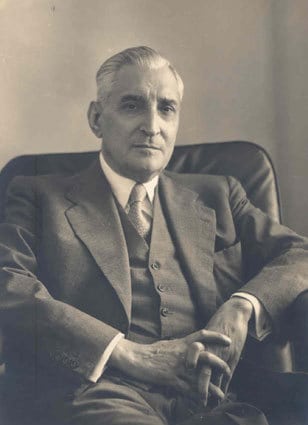
Antonio de Oliveira Salazar. Hired as the minister of finance in 1928, Salazar led Portugal to its largest economic growth in 400 years. Hailed as a hero, he was given total power in 1933. (Seen this script before? Same ending.) He rewrote the constitution and outlawed all political parties and labor unions. He made it illegal for more than three people to gather. He started PIDE, Portugal’s version of the Gestapo. He had friends interrogated.
During World War II Portugal was officially neutral and Salazar used the country’s natural resources to play one side against the other. Portugal was lousy with tungsten mines. Tungsten is used to make bullets, light bulbs and tanks, which somewhat come in handy during world wars. He began a bidding war between England and Germany and England wound up paying four times the original price. Filthy rich Portugal became one of the few Western European countries during the war that didn’t suffer rationing or blackouts. Thus, Salazar stayed in power.
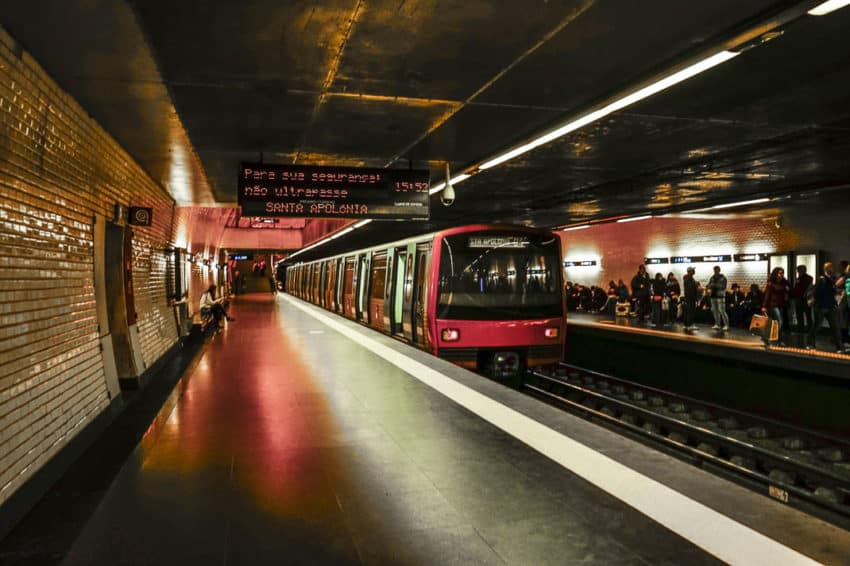
Salazar liked Adolf Hitler as a leader but disliked his racism, which is like saying you like vanilla ice cream except for the taste. While Salazar claimed he was not a racist, one of Hitler’s prize Volkswagens was found in Salazar’s collection. His government reigned until a military revolt in 1974, making it the longest dictatorship in Europe.
Today the leadership is quite different. Take drugs. Lisbon is a relatively safe city and one reason is it decriminalized drugs in 2001. It started treating addiction as a disease instead of a crime. The government hired public health companies to make treatment more readily available. After a brief uptick, drug use dropped dramatically. Heroin use plummeted from 100,000 users to 25,000. HIV infections dropped 90 percent since 1999. Overdose deaths have dropped 85 percent and the drug mortality rate is the lowest in Western Europe, 1/50 of the U.S. It is now known worldwide as “The Portuguese Model.”
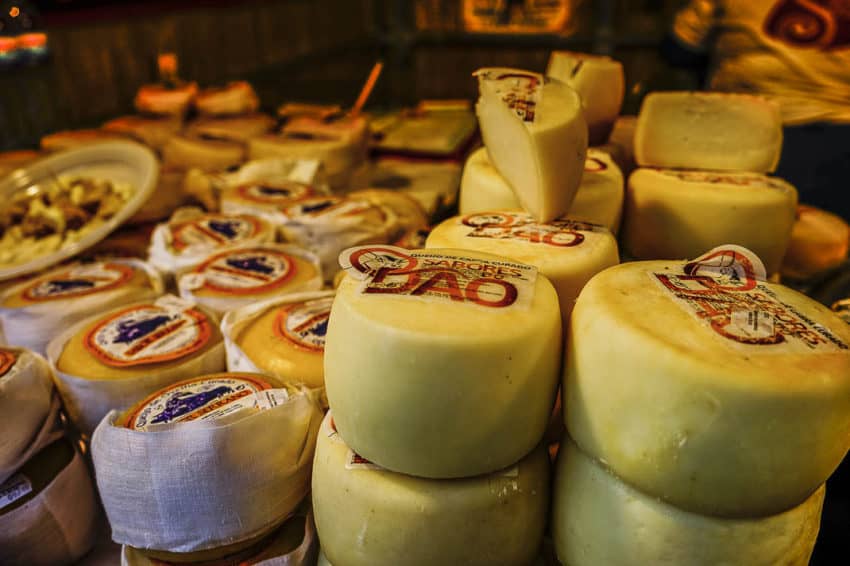
Portuguese cuisine will never be accused of being addicting. It’s heavy and its reflected in much of the population. One of its signature dishes is called francesinha, a big sloppy mess of ham, sausage and beef inside two slices of white bread and covered in bubbling, melted cheese. It looks as if it was invented by two drunk frat guys at 3 a.m. Francesinha is Portuguese for “Little French” and was actually invented in the 1960s by a Porto native who returned from France and wanted to add a twist to Portuguese cuisine.
Our meals in Lisbon were hit and miss. At Santo Antonio de Alfama, near our B&B, I had a wonderful duck thigh with orange and olive salad along with brie cheese and raspberry sauce and the best fried potatoes of my life, small and crispy and delicious with a mayo-herb dip.
But then we escaped a downpour into a seafood restaurant with the schlocky name of Sea Me near Praca Luis de Camoes. Marina’s allegedly fresh calamari was so frozen inside she had to send it back. My grilled sea bass, chosen off a bed of ice, consisted of about six bites for the larcenous price of 25.62 euros.

We eventually found more authentic places away from Alfama’s center, on the riverside near our hotel. At Vila Flor, a modern, airy place with high bar tables, I had a wonderful mixed grill of smoked sausages, ham and chorizo with rice and a sausage pate.
It’s clear tourism has helped fuel Lisbon’s economy. The Castelo de Sao Jorge has some of the most spectacular panoramic views of any castle I’ve ever visited but the restaurants and wine bars descending from it are comically touristy. Every restaurant posted menus in multiple languages. I think one was translated into Apache.
Still, Lisbon is one of Europe’s jewels and always has been, despite the turmoil, devastation and incompetence. The view from the castle reveals a sea of red-tile roofs, majestic church towers and a mishmash of neighborhoods carved up by narrow, cobblestone alleys. Too bad Dom Jose’s horse is facing the river. He’d like what he’d see.


April 20, 2018 @ 3:18 am
Well that does it my next trip is to Portugal! Thanks for a great blog John.
April 20, 2018 @ 10:56 am
Thanks for the note, Maria. Glad I inspired someone to this wonderful place.
April 20, 2018 @ 9:08 am
Thanks for your great information as usual. We will be in Portugal this fall for several weeks. Guess we won’t be staying at your b & b.
April 20, 2018 @ 10:55 am
Thanks for your comment, Kay. Yeah, don’t trust any hotel with “HOSTEL” in the name.
June 22, 2018 @ 3:35 am
I often visit your website and have noticed that you don’t update it often.
More frequent updates will give your page higher authority & rank in google.
I know that writing posts takes a lot of time, but you can always help yourself with
miftolo’s tools which will shorten the time of
creating an article to a few seconds.